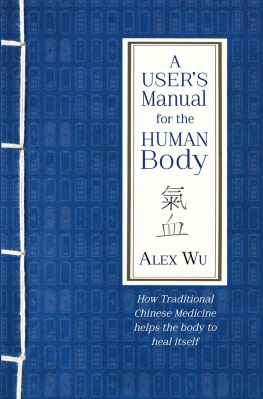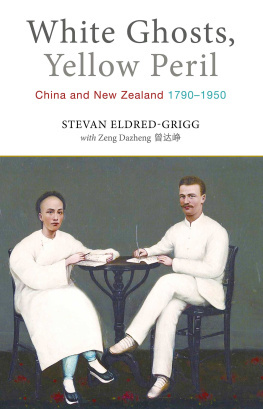Wu - The color of success: Asian Americans and the origins of the model minority
Here you can read online Wu - The color of success: Asian Americans and the origins of the model minority full text of the book (entire story) in english for free. Download pdf and epub, get meaning, cover and reviews about this ebook. City: United States, year: 2017;2013, publisher: Princeton University Press, genre: Art. Description of the work, (preface) as well as reviews are available. Best literature library LitArk.com created for fans of good reading and offers a wide selection of genres:
Romance novel
Science fiction
Adventure
Detective
Science
History
Home and family
Prose
Art
Politics
Computer
Non-fiction
Religion
Business
Children
Humor
Choose a favorite category and find really read worthwhile books. Enjoy immersion in the world of imagination, feel the emotions of the characters or learn something new for yourself, make an fascinating discovery.
The color of success: Asian Americans and the origins of the model minority: summary, description and annotation
We offer to read an annotation, description, summary or preface (depends on what the author of the book "The color of success: Asian Americans and the origins of the model minority" wrote himself). If you haven't found the necessary information about the book — write in the comments, we will try to find it.
Wu: author's other books
Who wrote The color of success: Asian Americans and the origins of the model minority? Find out the surname, the name of the author of the book and a list of all author's works by series.
The color of success: Asian Americans and the origins of the model minority — read online for free the complete book (whole text) full work
Below is the text of the book, divided by pages. System saving the place of the last page read, allows you to conveniently read the book "The color of success: Asian Americans and the origins of the model minority" online for free, without having to search again every time where you left off. Put a bookmark, and you can go to the page where you finished reading at any time.
Font size:
Interval:
Bookmark:

The Color of Success
Politics and Society in Twentieth-Century America
Series Editors
William Chafe, Gary Gerstle, Linda Gordon, and Julian Zelizer
A list of titles in this series appears at the back of the book
The Color of Success
Asian Americans and the Origins of the Model Minority
Ellen D. Wu
Princeton University Press
Princeton and Oxford
Copyright 2014 by Princeton University Press
Published by Princeton University Press, 41 William Street, Princeton, New Jersey 08540
In the United Kingdom: Princeton University Press, 6 Oxford Street, Woodstock, Oxfordshire OX20 1TW
press.princeton.edu
Cover photograph: Team USA, also known as the San Francisco Chinese Basketball Team, 1956. Courtesy of the San Francisco Chinese Basketball Team.
All Rights Reserved
Paperback ISBN: 978-0-691-16802-9
The Library of Congress has cataloged the cloth edition of this book as follows
Wu, Ellen D.
Politics and society in twentieth century America : Asian Americans and the origins of the model minority / Ellen D. Wu.
pages cm
Includes index.
Summary: The Color of Success tells of the astonishing transformation of Asians in the United States from the yellow peril to model minoritiespeoples distinct from the white majority but lauded as well-assimilated, upwardly mobile, and exemplars of traditional family valuesin the middle decades of the twentieth century. As Ellen Wu shows, liberals argued for the acceptance of these immigrant communities into the national fold, charging that the failure of America to live in accordance with its democratic ideals endangered the countrys aspirations to world leadership. Weaving together myriad perspectives, Wu provides an unprecedented view of racial reform and the contradictions of national belonging in the civil rights era. She highlights the contests for power and authority within Japanese and Chinese America alongside the designs of those external to these populations, including government officials, social scientists, journalists, and others. And she demonstrates that the invention of the model minority took place in multiple arenas, such as battles over zoot suiters leaving wartime internment camps, the juvenile delinquency panic of the 1950s, Hawaii statehood, and the African American freedom movement. Together, these illuminate the impact of foreign relations on the domestic racial order and how the nation accepted Asians as legitimate citizens while continuing to perceive them as indelible outsiders. By charting the emergence of the model minority stereotype, The Color of Success reveals that this far-reaching, politically charged process continues to have profound implications for how Americans understand race, opportunity, and nationhoodProvided by publisher.
ISBN 978-0-691-15782-5 (hardback)
1. Asian AmericansHistory20th century. 2. Asian AmericansCultural assimilation. 3. Asian AmericansEthnic identity. 4. Asian AmericansPublic opinion. 5. United StatesEthnic relationsHistory20th century. 6. United StatesRace relationsHistory20th century. 7. United StatesPolitics and government19451989. I. Title.
E184.A75W8 2013
305.895073dc23
2013019921
British Library Cataloging-in-Publication Data is available
This book has been composed in Sabon LT Std and Italia Std
Printed on acid-free paper.
Printed in the United States of America
For my mother and father,
Anita Mui Wu
and
Paul Pao-lo Wu
The problem of the twentieth century is the problem of the color-line,the relation of the darker to the lighter races of men in Asia and Africa, in America and the islands of the sea.
W.E.B. DuBois,
The Souls of Black Folk (1903)
Contents
Acknowledgments
Cataloguing the overwhelming generosity of all who have facilitated this project from start to finish has been humbling and heartwarming. It is impossible to repay all these kindnesses, but perhaps the following sentences can suffice.
I often marvel at how extraordinarily lucky I was to have studied with the best teachers and colleagues at the University of Chicago. My adviser, Mae Ngai, is the consummate mentor, always leading by example. I am continually inspired by her intellectual rigor, commitment to social justice, and dedication to her students. I hope she recognizes her stamp on any convincing parts of this book. George Chaunceys Postwar American Society seminar sparked my curiosity about this period and gave me the confidence to move forward. Kathleen Conzen, James Grossman, Thomas Holt, and Amy Dru Stanley profoundly influenced my understanding of history. Joanne Berens, Diane Brady, and David Goodwine cheerfully walked me through the bureaucratic maze of graduate school from beginning to end. Terry Schulte Scotts companionship enabled me to survive the first year. The camaraderie of Lisa Andersen, Melissa Borja, Michael Carriere, Kornel Chang, Beth Cooper, Mike Czaplicki, Orlando Garcia, Allyson Hobbs, Moira Hinderer, Amanda Howland, Miranda Johnson, Jennifer Lee, Quincy Mills, Meredith Oda, Arissa Oh, Albert Park, Steve Porter, Eli Salazar, Aaron Shapiro, Michael Stamm, Tracy Steffes, and Kyle Volk illuminated the delights of membership in a scholarly community.
I am also indebted to my professors at Indiana University, the University of California, Berkeley, and the University of California, Los Angeles for introducing me to the richness of history and Asian American studies: Nick Cullather, Eugene Eoyang, Yuko Kurahashi, Michael McGerr, Yuan Shu, Steve Stowe, Gin Yong Pang, Steve Louie, Valerie Matsumoto, Don Nakanishi, Glenn Omatsu, Kyeyoung Park, Sandhya Shukla, and Henry Yu. Regrettably, Yuji Ichioka passed away before I could share this work with him, but I hope it honors his efforts as a pioneer of Asian American history.
An army of specialists guided my navigation through the empirical building blocks of this project. For their assistance, I thank the staff members at Chicagos Japanese American Service Committees Legacy Center, the Chicago Japanese American Historical Society, the Chicago History Museum, the University of Chicagos Regenstein Library, the Brethren Church Archives, the California Historical Societys North Baker Research Library, the University of California, Berkeleys Ethnic Studies Library and Bancroft Library, the University of California, Los Angeles Young Research Library Special Collections, the University of California, Los Angeles Asian American Studies Reading Room, the Hoover Institution, the National Archives and Records Administration in College Park, Maryland, and Washington, DC, the Library of Congress, the Hawaii State Archives, the University of Hawaii at Manoas Hamilton Library, the Harry S. Truman Presidential Library, the Museum of Chinese in the Americas, the Japanese American National Museums Hirasaki Resource Center, Columbia Universitys Rare Book and Manuscript Library, the University of Utahs J. Willard Marriott Library Special Collections, the Academy of Motion Picture Arts and Sciences Margaret Herrick Library Special Collections, Yale Universitys Beinecke Rare Book and Manuscript Library, the University of Michigans Bentley Historical Library, the Hagley Library, the New York Public Librarys Performing Arts Library at Lincoln Center, the University of Iowa Libraries Special Collections, the University of Texas at Austins Perry-Castaeda Library, and densho.org. The staff members at the Document Delivery Services and Government Information Services at Indiana Universitys Wells Library clocked countless hours wading through the stacks for me.
I especially thank those who went out of their way to help me put all the pieces of this puzzle together, including Brandon Barton, Matthew Briones, Deborah Mieko Burns, Percy Chu, Miroslava Chvez-Garca, Winifred Eng Lee, Jim Gatewood, Jennifer Gee, Robert Gin, Reme Grefalda, Merie-Ellen Gushi, Mary Kao, Sojin Kim, Dong Kingman Jr., Cynthia Lee, Marji Lee, Lou Malcomb, Robert Meyer, Brian Niiya, Molly and Yoji Ozaki, Martha Nakagawa, Lisa Nishi, Wei Chi Poon, Jeff Rankin, Judy Soohoo, Randy Sowell, Jim Sparrow, Eileen Tamura, and Judy Yung. Chris Clements, Jason Luna Gavilan, Kristine Krueger, Meredith Oda, Erin Poirier, Katherine Wilson, and Grace Wong provided crucial research assistance. Setsuko Matsunaga Nishi, Jade Snow Wong, Betty Lee Sung, and William Yukon Chang took the time to tell me about their experiences as part of a remarkable earlier generation of Asian Americans. Anne Boylan, Jim Gatewood, Art Hansen, Mary Lui, Greg Robinson, and Henry Yu cordially sent primary materials my way. Charlotte Brooks became a kindred spirit. All the translations of Gilbert Woos
Next pageFont size:
Interval:
Bookmark:
Similar books «The color of success: Asian Americans and the origins of the model minority»
Look at similar books to The color of success: Asian Americans and the origins of the model minority. We have selected literature similar in name and meaning in the hope of providing readers with more options to find new, interesting, not yet read works.
Discussion, reviews of the book The color of success: Asian Americans and the origins of the model minority and just readers' own opinions. Leave your comments, write what you think about the work, its meaning or the main characters. Specify what exactly you liked and what you didn't like, and why you think so.














